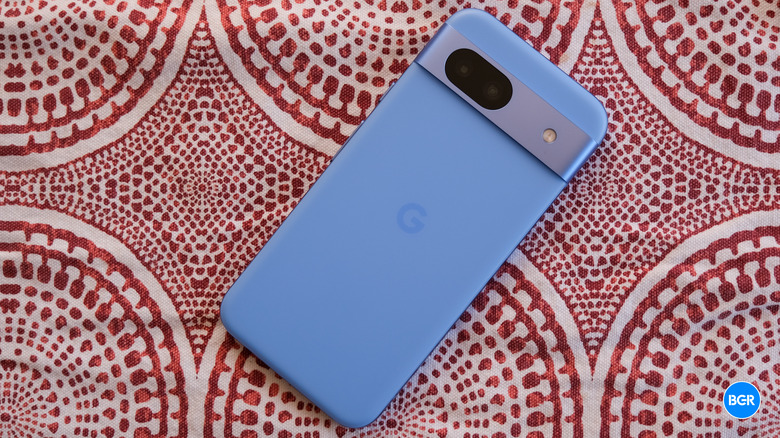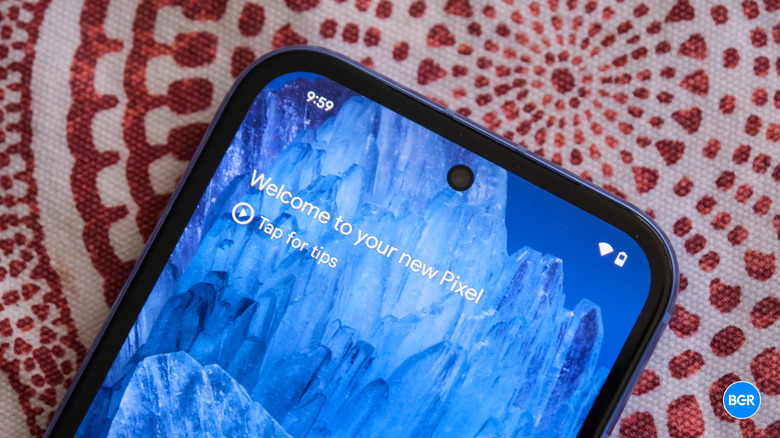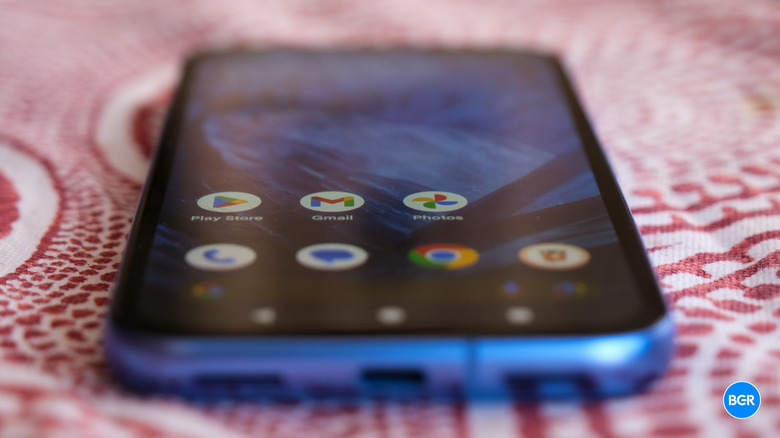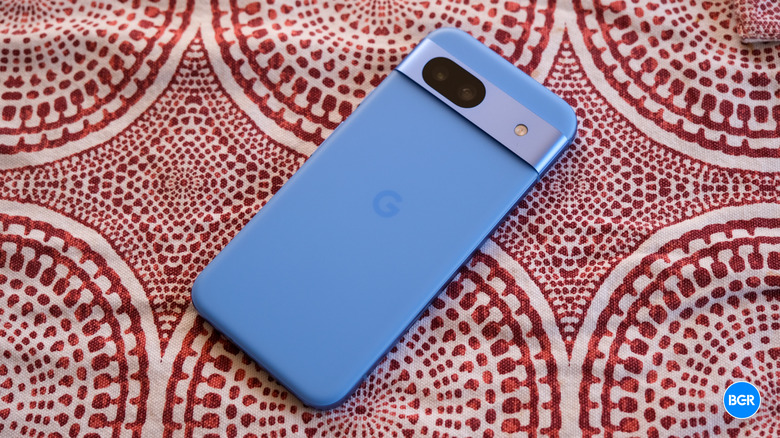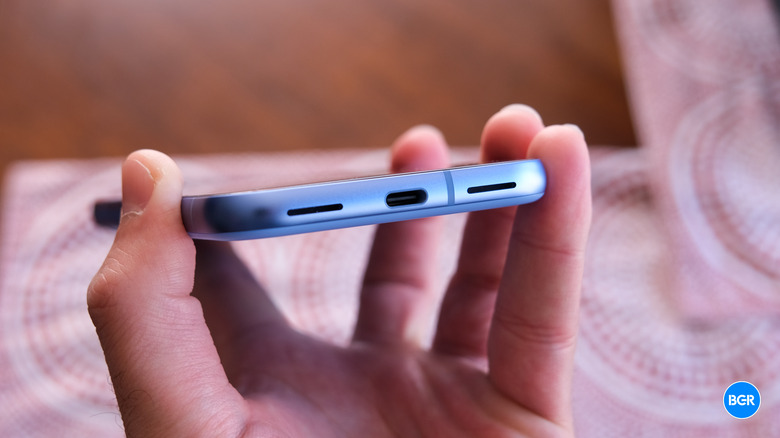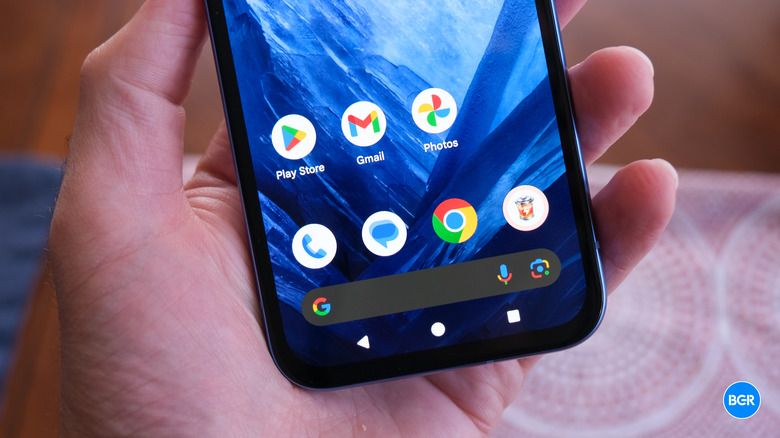Google Pixel 8a Review: A Better Buy Than The Pricier Pixel 8
- Stylish design
- Good camera
- Nice display
- Great performance
- Helpful AI features
- Slow charging
| Buy From | List Price | Sale Price | |
|---|---|---|---|
| Best Buy | $499 | $499 | See It |
Google's mainline Pixel phones have always offered the best of what Google thinks Android should be — but the Pixel A series has always easily offered better value for money. In recent years, as Google has transitioned to designing its own chips, the Pixel A devices have gotten even better, offering a level of performance that's on par with flagship phones, but at a lower price.
The latest in the long line of Pixel A phones is the new Google Pixel 8a. It joins the lineup alongside the Pixel 8 and Pixel 8 Pro, offering many of the same AI features, a similar level of performance, and an excellent camera.
In fact, it's so good that it has me wondering — why buy the Pixel 8?
Google Pixel 8a specs
| Dimensions | 6.0 x 2.9 x 0.4 inches |
| IP rating | IP67 |
| Display resolution | 1080 x 2400 |
| Display size | 6.1 inches |
| Display type | OLED |
| Display refresh rate | Up to 120Hz |
| Display brightness | 2000 nits peak |
| Chipset | Google Tensor G3 |
| Memory | 8GB |
| Storage | 128GB, 256GB |
| Rear cameras | Wide: 64MP, f/1.89 Ultrawide: 13MP, f/2.2, 120-degree field-of-view |
| Video | 4K at 60fps, slo-mo up to 240 fps |
| Front camera | 13MP |
| Ports | USB-C |
| Battery size | 4,492mAh |
| Charging | 18W (wired), 7.5W (wireless) |
| Connectivity | Wi-Fi 6E, Bluetooth 5.3, 5G |
| Colors | Obsidian, Porcelain, Bay, Aloe |
| Price | $499 |
A stylish, modern design
The Google Pixel 8a keeps many of the design touches that the Pixel series has become known for, with a few refinements that make it look a little more modern, and a little different from the Pixel 7a before it.
Let's start with the similarities. The device still has a camera bar that extends across the back of the phone. There's an oval cutout for the dual camera array, and like other recent Pixel phones, it comes in a few bright colors — though the colors are slightly different this time around. I have the so-called Bay model, which is basically just blue, and it looks great. However, the phone is also available in Aloe (green), Obsidian (black), and Porcelain (beige).
As you would expect, there's a USB-C port on the bottom for charging, and there's a power button and volume rocker on the right side.
Perhaps the biggest difference in design comes down to the rounded corners, which I have to say, look very nice. I'm a big fan of the more rounded look — it definitely helps make the phone look a little more premium.
The phone feels quite nice, too. It has an aluminum frame, and while its back is plastic instead of glass like on the higher-end Pixel 8 and 8 Pro, it certainly doesn't feel cheap. In fact, I really like the matte look of the blue Pixel 8a — though, of course, a matte glass would have been preferable. On the front, you'll find an edge-to-edge display with a slightly larger bottom bezel, and it's covered in Gorilla Glass 3. Yes, the same Gorilla Glass from 2013 — so if you're prone to drops and bumps, you might want to install a screen protector.
An even better display than before
The OLED screen on the Pixel 8a sits at 6.1 inches, with a 1080p resolution. It's a little smaller than the Pixel 8, but with the same resolution, it has a similar level of detail and clarity. The phone has Google's so-called Actua Display, which is basically just what Google calls its bundle of display tech.
The display can range in refresh rate from 60Hz to 120Hz, so it won't go as low as 1Hz, like some higher-end phones, but at least it can scale the refresh rate based on how you're using the phone.
Like the Pixel 8a, the phone has a peak brightness of 2,000 nits and a typical brightness of 1,400 nits. I found that it could easily get bright enough for most scenarios, including use outdoors.
Competition-beating performance
One of the best things about modern Pixel A phones is the fact that they have the same chipset as the mainline Pixel devices. Now, to be fair, that chipset isn't necessarily the best in the business — it won't compete with the top-end Snapdragon chip. But, the Google Tensor G3 found in this phone is still more than powerful enough for the majority of situations.
The phone was easily able to handle multitasking and mobile gaming, and apps loaded nice and quickly.
The big change to the Tensor G3 compared with the Tensor G2 was the addition of a new TPU, which enables a host of new AI features, particularly in the camera. We'll get into AI features a little later.
While the performance of the Pixel 8a won't compete with the highest-end phones, it certainly competes with and outperforms the vast majority of phones in this price range.
A solid battery, but slow charging
Under the hood, the Pixel 8a has a 4,492mAh battery, and I found that it was quite easily enough to get me through a day of use. I ended most days of light use with around 40-50% of battery remaining, though heavier users might end the day with less.
Unfortunately, as has become the trend with Pixel phones, it doesn't charge as quickly as I would have liked. The device maxes out at 18W wired charging, which is relatively slow in a world with phones that charge at over 100W. It does, thankfully, support wireless charging, at 7.5W. That's not unexpected in this price range, though it might have been nice to get full support for the Pixel Stand, with wireless charging up to 18W or so.
A camera on par with the Pixel 8
The Pixel 8a has a dual camera array with a 64-megapixel main camera and a 13-megapixel ultrawide camera with a 120-degree field of view. Unfortunately, despite the high-resolution main sensor you won't get any lossless zoom like on other devices, however the camera does come with Google's Super Res zoom processing tech that I've found to perform pretty well.
Generally, as expected, the Pixel 8a takes excellent photos. Images taken in well-lit environments are detailed and bright, and with some zoom, images are decently detailed. At 8x zoom (the maximum on offer by the phone), images definitely lose detail, and it makes sense that Google is limiting zoom to 8x. But they're not terrible.
In more challenging scenarios, the phone continues to perform pretty well. It's able to capture solid low-light photos, which still retain overall good detail. This is to be expected from a Pixel device in 2024 — but it's still always nice to see.
The AI-based camera features work just as well on the Pixel 8a as they do on the Pixel 8. Features like Best Take and Magic Eraser work a lot of the time, though you may find that sometimes they make things look a little funky. Still, they're certainly fun to play with, and they could come in handy.
On the front, you'll find a 13-megapixel front-facing camera, and it also performs quite well. It's a higher-resolution camera than the standard Pixel 8, though, to be clear, that doesn't necessarily mean it takes better photos. However, I did find the photos to be detailed and vibrant, and they also support handy additional features like background blur, with solid results.
Overall, the camera on the Pixel 8a is excellent for the price range. In testing side-by-side with the Pixel 8, I found that the Pixel 8 is able to capture slightly better photos most of the time, especially when digital zoom is introduced. But the difference isn't huge, and the phone still captures excellent photos.
That classic, smart, Pixel software
The Pixel software experience has long been one of the best things about Pixel phones — flagship and budget alike. That thankfully continues with the Pixel 8a. The phone offers the same software experience as the Pixel 8 and Pixel 8 Pro, complete with all the Google apps and features you could ever want.
I'm a big fan of Pixel software — it's my favorite Android software experience, despite the fact that it most certainly is not stock Android anymore.
The phone also supports some new features, like the ability to make use of the Gemini Nano large language model. This is a feature that has rolled out to other Pixel devices — but the Pixel 8a is the first to come with support out of the box. The feature has to be enabled in developer settings, but it lets you access features for things like on-device recorder summaries, which is a neat idea. It's likely Gemini Nano will offer more features over time.
Conclusions
The Pixel 8a is yet another hit budget phone from Google, and it really eliminates the need for the Pixel 8 altogether. If you're in the market for a new Pixel phone and don't want the larger, triple-camera Pixel 8 Pro, you should simply buy the Pixel 8a for its solid processing power and great camera.
The competition
The Pixel 8a continues to offer the best Android experience under $500 — and if $500 is your budget, it's the phone you should go for. If you really want to spend more, some might like the larger screen and extra camera on offer by the Pixel 8 Pro, but everyone else should stick with the Pixel 8a.
Should I buy the Google Pixel 8a?
Yes. It's the best Android phone under $500.
